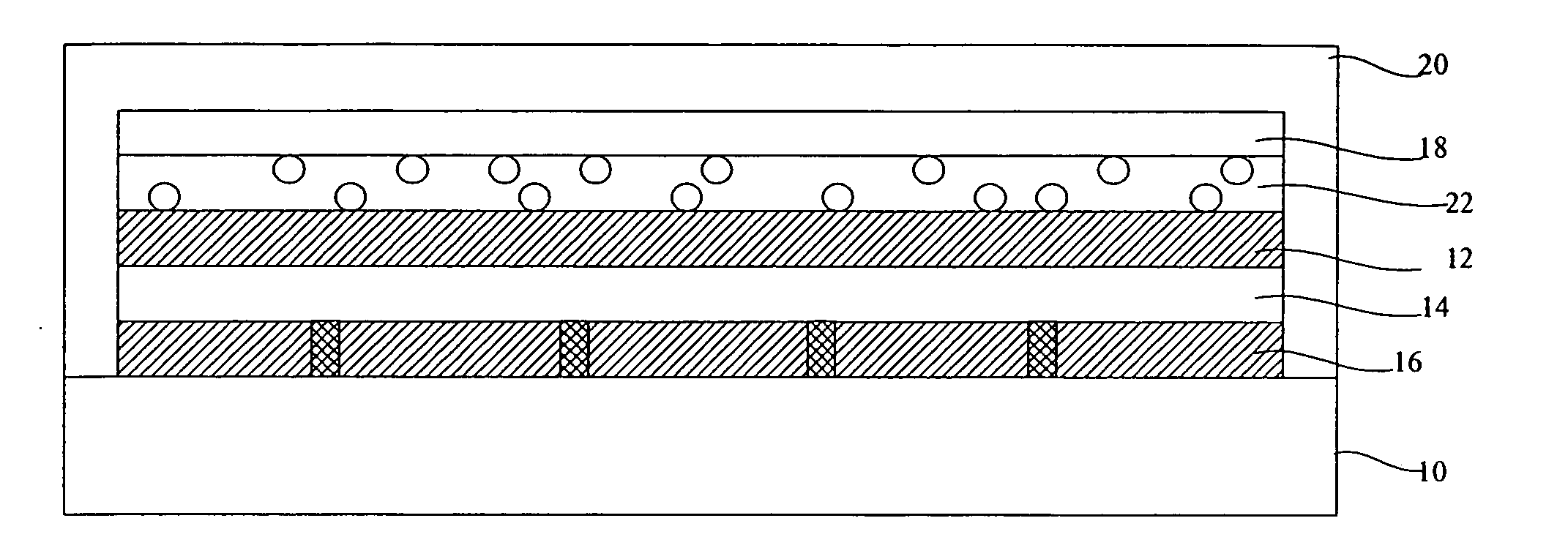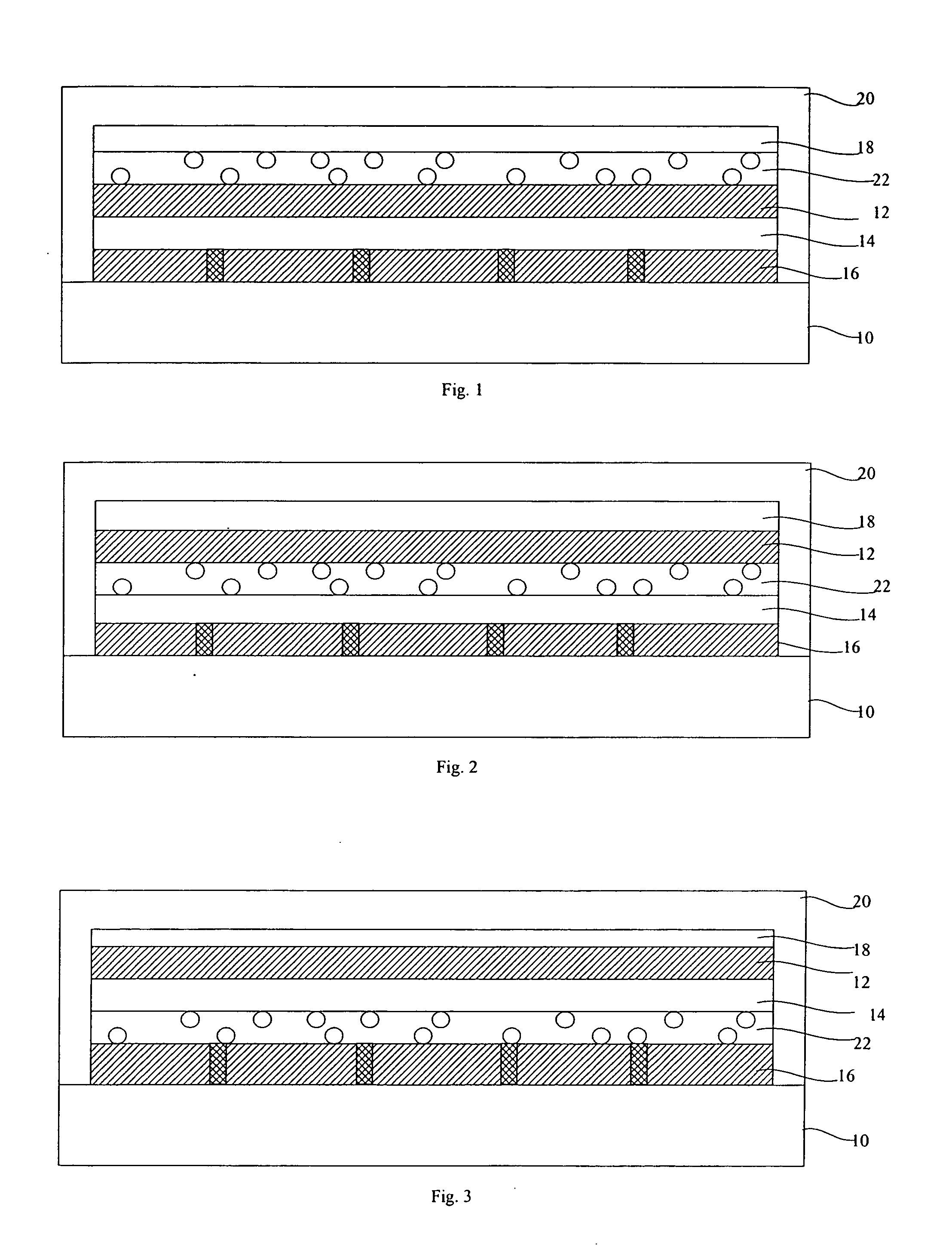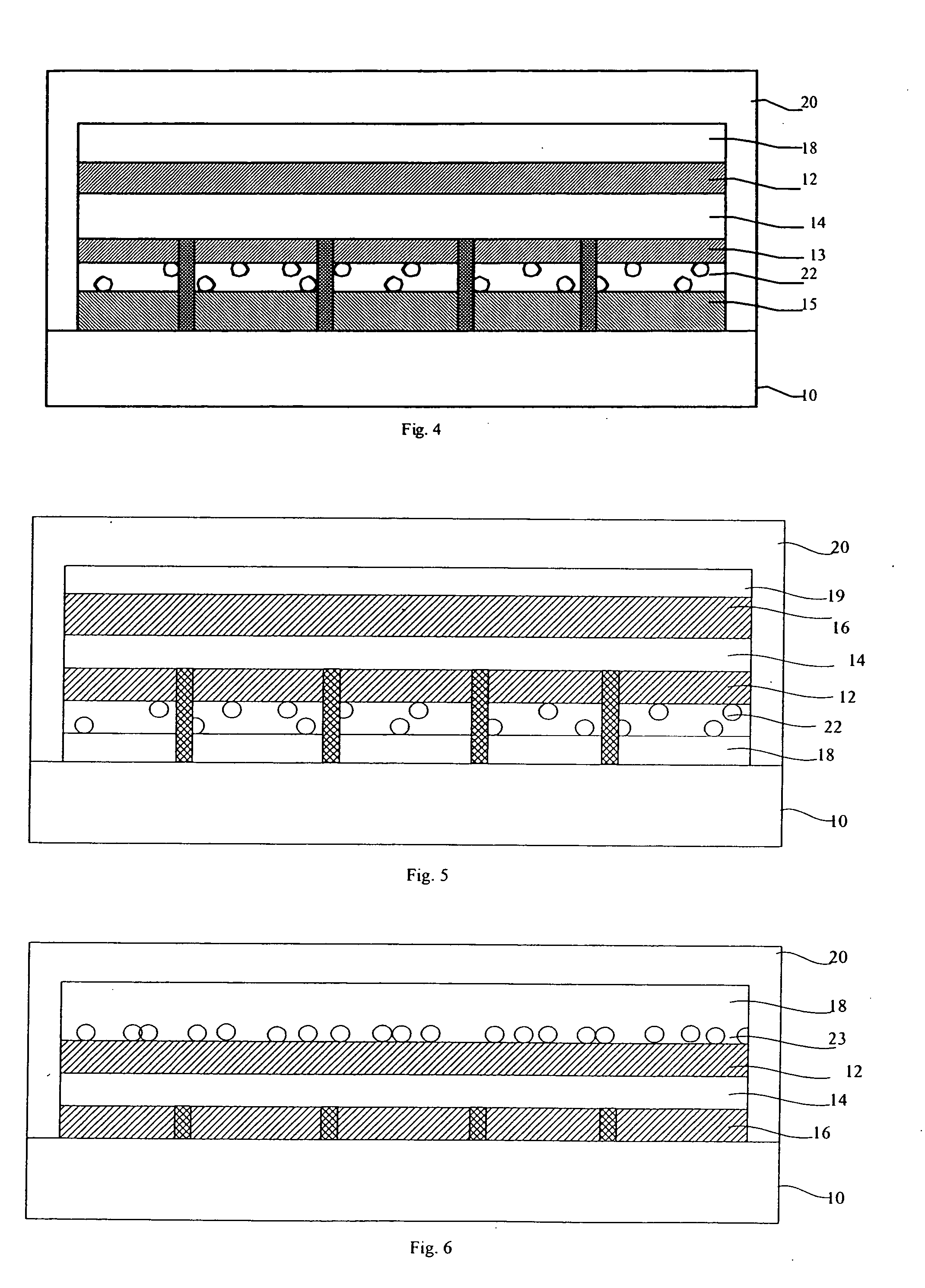Oled device having improved light output
a light-emitting diode and light-emitting layer technology, which is applied in the direction of discharge tube luminescnet screens, discharge tube/lamp details, electric discharge lamps, etc., can solve the problems of limiting the efficiency of oled devices, affecting the sharpness of the light-emitting layer, and absorbing a large amount of light within the device. , to achieve the effect of improving the sharpness, increasing the light output and improving the sharpness
- Summary
- Abstract
- Description
- Claims
- Application Information
AI Technical Summary
Benefits of technology
Problems solved by technology
Method used
Image
Examples
Embodiment Construction
[0036] Referring to FIG. 1, in accordance with one embodiment, a top-emitting organic light-emitting diode. (OLED) device comprises a substrate 10; an OLED comprising a first reflective electrode 16 and a second transparent electrode 12, one or more layers 14 of organic light-emitting material formed between the electrodes 12 and 16, and an encapsulating transparent cover 20 through which light from the OLED is emitted. Either one of the first or second electrodes 12 or 16 may be pixellated to form distinct light emitting areas. The transparent electrode 12 and layer(s) 14 of organic light-emitting material have a first refractive index range, and the transparent cover 20 has a second refractive index. A light scattering layer 22 is located between the substrate and cover, in this embodiment between the transparent electrode 12 and the cover 20. As employed herein, a light scattering layer is an optical layer that tends to randomly redirect any light that impinges on the layer from ...
PUM
 Login to View More
Login to View More Abstract
Description
Claims
Application Information
 Login to View More
Login to View More - R&D
- Intellectual Property
- Life Sciences
- Materials
- Tech Scout
- Unparalleled Data Quality
- Higher Quality Content
- 60% Fewer Hallucinations
Browse by: Latest US Patents, China's latest patents, Technical Efficacy Thesaurus, Application Domain, Technology Topic, Popular Technical Reports.
© 2025 PatSnap. All rights reserved.Legal|Privacy policy|Modern Slavery Act Transparency Statement|Sitemap|About US| Contact US: help@patsnap.com



